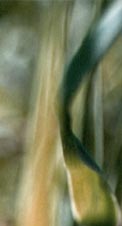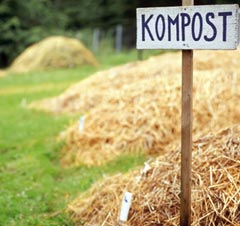Composting in the WALA Herb Garden
Compost Care
Twice yearly, in spring and in autumn, all composts are turned by hand with pitchforks. This is done to promote the decomposition and maturing processes in the compost heap. As a result of this turning all the layers are mixed and loosened. In fresh composts there can be insufficient breakdown at the core because of too much moisture and a lack of oxygen or because the compost is too tightly packed. Turning can set the decomposition process going again. The careful turning twice a year results in optimal mixing of the materials, revitalization of the compost heap and promotion of the compost fauna.
Turning also allows the gardener to look inside the compost heap. He or she can see how richly the compost is permeated with worms and other animal creatures, can observe its color, feel its moisture, perceive its smell. The turning allows the gardener to experience with his or her own body the heaviness or lightness of the earth in the compost heap.
After turning, the compost preparations are added. These contain yarrow, dandelion and chamomile flowers, oak bark, green shoots of stinging nettle and the juice of valerian flowers.



